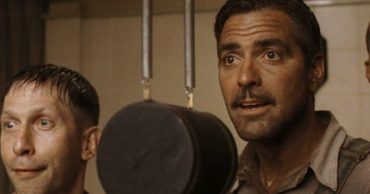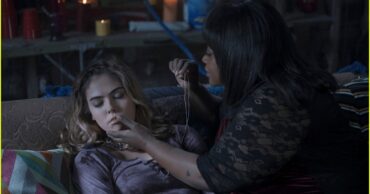
Being stuck continuously in one place over a long period of time sucks. Speaking as someone who can barely go out in case I potentially infect the elderly population nearby, today’s difficult times have forced me to learn to amuse myself within the four walls of my own apartment. Thankfully I work from home anyway, so most parts of my life are unaffected, but I will miss bars, restaurants, meeting people in town and, of course, going to the cinema.
But movies can also be viewed at home, especially films about people dealing with the pains of being stuck in one place. This is different to films where people choose, more or less, to be in one place; instead we are looking at films where those involved don’t really have a choice about where they are. Spanning from in-the-moment documentaries to psychological horrors to concept thrillers to bourgeoise satires, we have five films about the pains – both physical and existential – of being locked up in just one place. Read on to see what we have picked. Think we missed a particular masterpiece? Please let us know via the comment section below.
This Is Not a Film
Made while the filmmaker, Jafar Panahi, was put under house arrest by the Iranian authorities, This Is Not a Film shows the importance of creating art even under the most adverse of circumstances. Shot on his iPhone, it takes a verité look at his everyday life at home, as well as talking to his family and his lawyer about his circumstances, creating a reverie on what it even means to be a filmmaker.
The producers of This Is Not a Film managed to smuggle the film into Cannes through a flash drive hidden in a birthday cake. Additionally, along with his contemporary Mohammad Rasoulof, who has also been under house arrest, he has managed to create further films despite the restrictions put upon him, showing his resilience under state pressure. For those of us merely suffering the far-less terrible prospect of quarantine or self-isolation, This Is Not a Film is proof that one can make art with even the smallest of resources and settings available.
Devil
The trapped-in-the-lift genre is as old as the hills. A trope used in many a sitcom to force people to finally come to terms with each other, it rarely sees any true formal innovation. Devil however, based on a story by none other than M. Night Shyamalan, is probably the pinnacle of the micro-genre. It starts with the suicide jump of a man from the thirty-fifth floor of a skyscraper, warning of the presence of the devil.
This missive doesn’t reach the group of diverse characters who take an elevator in the same building, suddenly getting stuck midway up their journey. What they don’t know is that the evil presence is in there with them, forcing them to seriously reconsider their life choices. Made in true Hitchcockian tradition – with a bit of supernatural horror to make things really terrifying – Devil reminds us that if you are going to be trapped, its probably better to be trapped alone. At least then you only have only your own demons to deal with.
Exam
A low-budget British feature, Exam gets a lot of mileage out of its minimalist premise. It follows eight mandatory candidates being trotted into a room to take an exam. The rules are simple: no one is allowed to spoil the paper, talk to the invigilator or leave the room. If they do so, they will be disqualified.
The problem is, no one can seem to find the single question needed to be answered, leading to a soul-searching conflict between all the different characters. An ingeniously developed movie, especially in the way it portrays power dynamics during this difficult situation, it keeps the viewer guessing right until the end, showing the amount of mileage one can can get out of just one location. It turns out that this exam is being used for testing against a pandemic, giving this film a new-found relevance in today’s coronavirus times.
Buried
Even on a list full of minimalist films, Buried is surely the most minimalist of them all, taking place entirely within the action of a literal coffin. It tells the story of Paul Conroy, played by Ryan Reynolds in a career-best performance, a truck driver working in Iraq who has been kidnapped by terrorists and left to be buried alive in this coffin.
The only things he has to help him are a lighter, flask, flashlight, knife, glowsticks, pen, pencil and mobile phone. Somehow director Rodrigo Cort̩s manages to keep the action interesting despite the physical limitations of the plot Рusing these everyday objects to brilliant use Рdelivering a thriller that is as gripping as it is emotionally affecting. For one thing, it puts things into perspective, making staying at home watching TV sound like a complete luxury in comparison.
The Exterminating Angel
When it comes to getting mysteriously stuck in one place, no one comes close to the genius of Luis Buñuel. The Exterminating Angel may just be his masterpiece, telling the story of a variety of guests who come for dinner, but upon trying to leave find that they simply cannot get out of the house. Here the surreal premise is really taken as a given: with no explanation as to why these people cannot get out of the house, The Exterminating Angel explores the more existential elements of what it means to be trapped.
Without giving too much away explicitly, Buñuel uses this premise as a means to satirise Spanish middle-class assumptions during the Franco era. As the characters are forced to stay at the party for much longer than they intended to, they start revealing their worst tendencies, showing the savagery that lingers just underneath the pleasantry of the ruling class. For a thematic link, its good to check out Buñuel’s sharp satire The Discreet Charm of the Bourgeoisie, which depicts the opposite: a group of rich people trying to dine together but finding themselves constantly interrupted.
 Follow Us
Follow Us




